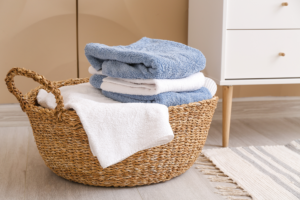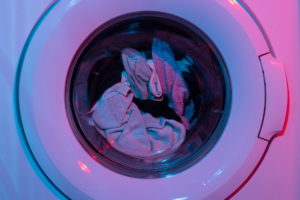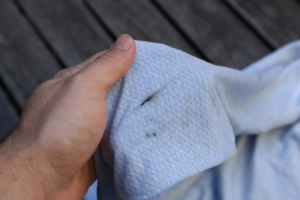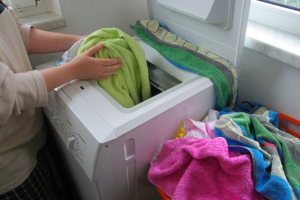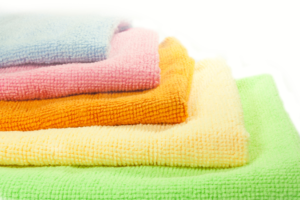Six DIY Stain Removal Methods For Spotless Laundry
Do you struggle with keeping your towels and cloths looking fresh and clean? Are you tired of using harsh chemicals and expensive laundry detergents that don’t seem to do the job? If so, keep reading to discover the solution to your laundry woes.
Maintaining clean and stain-free towels and cloths can be a challenge, but it’s not impossible. With the right techniques and DIY stain removal methods, you can achieve spotless laundry without spending a fortune. In fact, the methods we’re about to share with you are affordable, effective, and easy to implement.
Imagine having a laundry routine that’s simple, stress-free, and yields perfect results every time. Picture your towels and cloths looking and smelling like they’re brand new, no matter how many times you’ve washed them. With our six DIY stain removal methods and laundry tips, you can achieve this and more. Say goodbye to laundry mishaps and hello to spotless laundry!
Don’t wait any longer to achieve the clean and fresh laundry you deserve. Implement these six DIY stain removal methods and laundry tips today. With a little effort and attention to detail, you can transform your laundry routine and enjoy the results for years to come. Start now and see the difference for yourself!
What is wash towels and cloths the right way?

Washing towels and cloths the right way refers to the process of cleaning and maintaining these items using appropriate methods that result in spotless laundry without any undesirable side effects.
This includes sorting laundry, using the right temperature and detergent, pre-treating stains, avoiding overloading the washing machine, and drying towels and cloths properly.
By following these guidelines and using our six DIY stain removal methods, you can achieve clean and fresh laundry without harsh chemicals or expensive detergents.
By using simple and affordable ingredients like baking soda, vinegar, and lemon juice, our methods can effectively remove even the toughest stains and leave your towels and cloths looking and smelling fresh.
Reasons You Need to Know How to wash towels and cloths the right way
Knowing how to wash towels and cloths the right way is essential for several reasons.
First, it helps maintain the quality and longevity of your towels and cloths, ensuring that they remain soft, fluffy, and absorbent even after multiple washes.
Second, using the right methods and products can help prevent damage to your laundry, such as shrinking, fading, or discoloration. Third, proper washing techniques can remove stubborn stains and odors, leaving your towels and cloths looking and smelling like new.
By learning these skills, you can save money on laundry products and extend the life of your towels and cloths, while also enjoying fresh and clean laundry every time.
Here are some specific reasons why knowing how to wash towels and cloths the right way is important and relevant:
What is important?
- Maintains the quality and longevity of your towels and cloths
- Prevents damage to your laundry, such as shrinking, fading, or discoloration
- Removes stubborn stains and odors, leaving your towels and cloths looking and smelling like new
- Saves money on laundry products by using effective DIY stain removal methods
- Reduces environmental impact by using eco-friendly laundry practices
- Enhances the overall cleanliness and hygiene of your home by ensuring clean towels and cloths
- Improves your laundry skills and knowledge, which can be applied to other fabrics and materials.
Our six DIY stain removal methods are the ideal solution for achieving spotless laundry without any undesirable side effects. By using simple and affordable ingredients like baking soda, vinegar, and lemon juice, our methods can effectively remove even the toughest stains and leave your towels and cloths looking and smelling fresh.
Unlike harsh chemicals and expensive detergents, our methods are gentle on your laundry and the environment, making them a sustainable and cost-effective option.
By following our step-by-step instructions and incorporating our methods into your laundry routine, you can achieve perfect results every time and enjoy clean and fresh towels and cloths for years to come.
“Cleanliness and order are not matters of instinct; they are matters of education, and like most great things, you must cultivate a taste for them.”
Benjamin Disraeli
This quote emphasizes the importance of education and cultivation in achieving cleanliness and order. It suggests that cleanliness is not an innate trait, but rather a skill that must be learned and developed. With education and cultivation, anyone can learn to appreciate and value cleanliness as an essential part of a healthy and orderly life.
Step-by-Step Instructions to How to wash towels and cloths the right way
Our unique process for washing towels and cloths the right way involves a combination of effective DIY stain removal methods and proper laundry techniques.
By following our step-by-step instructions, you can achieve spotless laundry without any undesirable side effects. Our process includes sorting laundry, pre-treating stains, using the right temperature and detergent, avoiding overloading the washing machine, and drying towels and cloths properly.
We also provide six DIY stain removal methods that can be used for a variety of stains, including grease, blood, and wine. With our process, you can achieve clean and fresh laundry while also saving money and reducing your environmental impact.

Sort it out:
Separate towels and cloths by color and fabric type to avoid color bleeding and damage.
Stain Attack:
Pre-treat stains with one of our six DIY stain removal methods.
Temperature Control:
Use the appropriate water temperature for the fabric type and level of soiling.
Right Detergent:
Choose the right detergent for your laundry, and avoid overloading the washing machine.
Drying Done Right:
Properly dry towels and cloths to avoid shrinking and damage.
Fresh and Ready:
Fold and store towels and cloths once they are completely dry.
By following these steps, you can achieve spotless laundry without any undesirable side effects. These steps include proper stain treatment, temperature control, and drying techniques, all of which are critical to achieving clean and fresh laundry. By incorporating these steps into your laundry routine, you can extend the life of your towels and cloths, save money on laundry products, and enjoy fresh and clean laundry every time.
Now that you know why it’s important to wash towels and cloths the right way and have a good understanding of the steps involved, it’s time to dive into the full tutorial. In the following section, we will walk you through each step in detail and provide tips and tricks to make the process as easy and effective as possible.
Whether you’re a seasoned laundry pro or just starting out, our tutorial will help you achieve spotless laundry without any undesirable side effects.
So let’s get started!

Preparing your laundry the right way
Preparing your laundry the right way is the first step to achieving spotless results.
Before you start washing your towels and cloths, it’s essential to sort them by color and fabric type to prevent any bleeding or damage. Sort light and dark-colored items separately and also separate delicate fabrics such as silk and wool.
Once your laundry is sorted, be sure to check the care label on each item for specific washing instructions. This will help you determine the appropriate water temperature, laundry detergent, and other necessary considerations for each fabric type. By properly preparing your laundry, you can help ensure that your towels and cloths are cleaned effectively without any undesirable side effects.
1.1 Sorting your laundry
Sorting your laundry is a crucial step in preparing your laundry for washing. It involves separating your clothes by color and fabric type to prevent any damage or bleeding. Start by creating three separate piles for your laundry: light colors, dark colors, and delicates.
For light and dark-colored clothes, simply separate them into their respective piles. For delicates, take extra care to sort them by fabric type. Separate silk, wool, and other delicate fabrics into their own pile to prevent any damage during the washing process.
Once you have separated your laundry, you can proceed to the next step of preparing your laundry for washing. Proper sorting can help ensure that your clothes are cleaned effectively without any undesirable side effects.
1.2 Using the right temperature and detergent
Using the right temperature and detergent is crucial for washing your towels and clothes the right way. The first step is to check the care label on your clothes to determine the appropriate water temperature and washing instructions.
Typically, whites and light colors should be washed in hot water, while darker colors should be washed in cold water to prevent fading. Delicate fabrics like silk and wool should always be washed in cold water.
The next step is to choose the right detergent. You should always use a detergent that is appropriate for the type of fabric you are washing.
For example, if you are washing baby clothes, you should use a gentle detergent that is free of dyes and fragrances. If you are washing towels or workout clothes, you may want to use a detergent that is designed to remove sweat and odor.
Always measure the detergent carefully and use the amount recommended on the packaging to avoid leaving any residue on your clothes.
1.3 Pre-treating stains the right way
Pre-treating stains is an important step in ensuring that your towels and clothes are cleaned thoroughly without any undesirable side effects.
Here’s how you can do it the right way:
Identify the stain:
The first step is to identify the type of stain on your garment. Different stains require different treatment methods. For example, protein-based stains like blood or sweat require cold water, while oil-based stains like makeup or cooking oil require hot water.
Choose the right pre-treatment method:
There are several pre-treatment methods you can use, such as using a pre-treatment spray, soaking the garment in a solution of detergent and water, or applying a paste of baking soda and water. Choose the method that is most suitable for the type of stain you are dealing with.
Apply the pre-treatment:
Apply the pre-treatment to the stain and let it sit for at least 15-20 minutes. This will allow the solution to penetrate the fabric and break down the stain.
Wash the garment:
After pre-treating the stain, wash the garment as usual, following the instructions on the care label. Make sure to use the right temperature and detergent for the type of fabric and stain.
By pre-treating stains the right way, you can effectively remove them without damaging your clothes or towels.
1.4 Avoiding overloading the washing machine
Overloading your washing machine can result in inadequate cleaning of your clothes and can even damage your machine. To avoid this, make sure to load your machine correctly by filling it with only the recommended amount of laundry.
A general rule of thumb is to fill your machine no more than ¾ full. This ensures that there is enough space for the water and detergent to circulate properly, leading to cleaner and fresher laundry.
To execute this step, start by checking the manufacturer’s instructions for your washing machine to find out the recommended load size.
Next, separate your laundry into piles of similar fabrics and colors to ensure even washing. Then, add the recommended amount of detergent and water to the machine before carefully placing your laundry inside.
Avoid packing your machine too tightly, and if necessary, split your laundry into smaller loads to ensure adequate cleaning. By following these simple steps, you can prevent overloading your washing machine and achieve the best possible results for your laundry.
DIY stain removal methods
There are several DIY stain removal methods you can use to keep your laundry spotless. One effective method is to use vinegar and baking soda. Start by applying vinegar to the stain, then sprinkle baking soda over it. Let it sit for a few minutes before washing the item in the washing machine as usual.
Another method is to use hydrogen peroxide and dish soap. Mix the two together, apply to the stain, and let it sit for a few minutes before washing.
Another option is to use lemon juice and salt.
Squeeze lemon juice over the stain, then sprinkle salt on top. Let it sit for a few hours before washing. You can also try using aspirin to remove stains.
Crush up a few tablets and mix them with water to create a paste. Apply the paste to the stain and let it sit for a few hours before washing. These DIY stain removal methods are effective and easy to execute, making them a great addition to your laundry routine.
2.1 Baking soda and vinegar
Baking soda and vinegar are two powerful natural ingredients that can be used to remove stains from clothes and towels. To use this method, mix a quarter cup of baking soda with a quarter cup of white vinegar to make a paste.
Apply the paste directly onto the stain and let it sit for about 15 minutes. Then, wash the item in the washing machine using the hottest water setting that is safe for the fabric. This method works particularly well for removing stains caused by sweat, oil, and food.
It’s important to note that you should always test the baking soda and vinegar paste on a small, inconspicuous area of the fabric before applying it to the stain.
This will ensure that the fabric won’t be damaged or discolored by the paste. Additionally, be sure to rinse the fabric thoroughly after using this method to avoid any residue from the paste.
2.2 Lemon juice and salt
To use lemon juice and salt as a DIY stain removal method, you’ll need a lemon and some table salt. Start by squeezing the lemon juice onto the stain and then sprinkle salt on top of the juice.
Use a clean cloth to rub the mixture into the stain gently. Let it sit for about 30 minutes, and then rinse the cloth under cold water. Check to see if the stain has been removed. If the stain is still visible, repeat the process or try a different method.
Lemon juice contains citric acid which helps to break down the stain, and the salt acts as an abrasive to lift the stain from the fabric. This method is particularly effective on sweat stains and can be used on both white and colored fabrics.
However, be cautious when using lemon juice on delicate fabrics as it may cause discoloration or damage to the fabric.
2.3 Hydrogen peroxide and dish soap
Hydrogen peroxide and dish soap can also be an effective DIY stain removal method. First, mix equal parts hydrogen peroxide and liquid dish soap in a bowl.
Apply the mixture directly to the stain and let it sit for 5-10 minutes. Then, using a damp cloth, gently rub the stain in a circular motion. Rinse the area with cold water and repeat the process until the stain disappears.
It’s important to note that this method should not be used on delicate fabrics as hydrogen peroxide can be a bleaching agent and may cause discoloration.
2.4 Cornstarch and milk
Cornstarch and milk are a surprisingly effective combination for removing grease and oil stains from clothes. To use this method, first, mix cornstarch and milk together to form a paste.
Then, apply the paste directly to the stained area and let it sit for 30 minutes to an hour, allowing it to absorb the grease or oil. After that, gently rub the paste into the stain using a soft-bristled brush. Finally, wash the garment as usual.
One thing to keep in mind when using this method is that it’s important to use cold milk rather than warm or hot milk. Warm milk can actually set the stain, making it more difficult to remove.
Additionally, you may need to repeat the process a few times for particularly stubborn stains. But overall, cornstarch and milk can be a great natural alternative to chemical stain removers.
2.5 Club soda and salt
Club soda and salt can also be an effective DIY stain removal method for clothes.
Start by wetting the stained area with club soda and then sprinkle salt over it.
Gently rub the area with a clean cloth or sponge, and let it sit for about 30 minutes. Rinse the area with cold water and repeat the process if necessary.
The carbonation in the club soda helps to lift the stain while the salt acts as an abrasive to loosen any remaining particles.
This method can work well for stains such as red wine or coffee.
2.6 Aspirin and hot water
Aspirin can be a surprising yet effective solution for removing stains. Crush two aspirin tablets and dissolve them in half a cup of hot water. Once dissolved, pour the mixture onto the stain and let it sit for 30 minutes to an hour.
Afterward, wash the garment in the washing machine as usual.
Aspirin contains salicylic acid, which acts as a mild abrasive and helps to break down tough stains. This method is particularly effective for removing sweat stains and can be used on white or coloured fabrics.
However, it’s important to note that this method is not suitable for delicate fabrics or those that cannot be washed in hot water.
How to remove common stains
Removing common stains can be a challenging task, but with the right techniques and products, it can be achieved successfully. Some of the most common stains include grease, blood, ink, and wine stains.
To remove grease stains, you can use a combination of dish soap and warm water. Apply the mixture to the stain and let it sit for a few minutes before rinsing with warm water.
For blood stains, use cold water to rinse the area, and then apply a paste made of baking soda and water to the stain. Let it sit for 30 minutes before washing with cold water.
To remove ink stains, you can use rubbing alcohol or a mixture of milk and corn-starch. Apply the product to the stain and let it sit for a few minutes before rinsing with warm water.
For wine stains, you can use a combination of vinegar and dish soap. Apply the mixture to the stain and let it sit for a few minutes before washing with warm water.
Always check the care label on your garment before attempting to remove any stains and avoid using hot water or a dryer as they can set the stain permanently.
3.1 Grease stains
Grease stains are one of the most common types of stains that can be difficult to remove. To remove grease stains, you need to act quickly. Start by blotting up as much of the excess grease as possible using a clean cloth or paper towel.
Then, sprinkle some cornstarch or talcum powder over the stain and let it sit for a few minutes to absorb the grease. After that, brush off the powder and apply a small amount of dishwashing liquid to the stain.
Rub the dishwashing liquid into the stain using a soft-bristled brush, and let it sit for 10-15 minutes. Finally, wash the garment in the washing machine on a warm water setting with a good quality laundry detergent. If the stain persists, repeat the process until the stain is completely removed.
3.2 Wine stains
To remove wine stains, start by blotting up as much of the wine as possible with a clean cloth or paper towel. Do not rub the stain as this will only make it worse. Next, mix a solution of equal parts white vinegar and water and apply it to the stain. Allow it to sit for a few minutes before blotting it up with a clean cloth.
If the stain persists, mix a solution of hydrogen peroxide and dish soap, apply it to the stain, and let it sit for a few minutes before blotting it up with a clean cloth. It’s important to note that hydrogen peroxide can bleach fabrics, so test it on a small, inconspicuous area first.
3.3 Blood stains
Blood stains can be tough to remove, but with the right method, it can be done. First, soak the stained fabric in cold water for at least 30 minutes, or until the stain starts to lift. Then, mix a solution of 1 tablespoon of salt and ½ cup of cold water and apply it to the remaining stain.
Let the solution sit for at least 10 minutes before rinsing the fabric in cold water again. If the stain is still visible, apply a mixture of 1 teaspoon of dishwashing liquid and 1 cup of cold water to the stain and let it sit for 5-10 minutes before rinsing again. Repeat the process until the stain is completely removed. Finally, wash the fabric as usual with cold water and detergent.
3.4 Ink stains
Ink stains can be particularly stubborn to remove, but there are a few methods that may be effective. One option is to apply rubbing alcohol or hand sanitizer directly to the stain and let it sit for a few minutes before washing the garment as usual. Alternatively, you can try soaking the stain in milk for several hours before washing.
Another option is to make a paste of baking soda and water, apply it to the stain, and let it sit for a few hours before washing. Whatever method you choose, it’s important to treat the stain as soon as possible to increase your chances of success.
3.5 Chocolate stains
Chocolate stains can be stubborn and difficult to remove, but with the right approach, they can be effectively treated. Start by scraping off any excess chocolate with a dull knife or spoon.
Then, run cold water over the stain from the back of the fabric to flush out as much chocolate as possible. Mix a solution of dish soap and water and apply it to the stain, gently rubbing it in with your fingers or a soft brush. Let the solution sit on the stain for about 10-15 minutes, then rinse it out with cold water.
If the stain persists, try treating it with a solution of white vinegar and water or rubbing alcohol, using the same method as before. Once the stain is removed, wash the item in the washing machine as usual.
3.6 Sweat stains
Sweat stains can be challenging to remove, but there are a few simple steps that can help. First, rinse the stained area with cold water to flush out as much of the sweat as possible.
Then, pre-treat the stain by applying a stain remover or a mixture of equal parts water and white vinegar directly to the affected area. Gently rub the stain with a soft-bristled brush or your fingers and let the solution sit for 10-15 minutes.
After the pre-treatment, wash the garment in the hottest water recommended on the care label with an enzyme-based laundry detergent.
Avoid using chlorine bleach, as it can react with the proteins in sweat and make the stain worse. Check the stain before drying the garment and repeat the pre-treatment and washing process if necessary.
Tips for washing towels and cloths without undesirable side effects
To wash towels and cloths without undesirable side effects, there are some tips you can follow. Firstly, avoid using too much detergent as it can leave a residue on your towels and cause them to feel stiff. Additionally, using fabric softener or dryer sheets can also leave a coating on towels that reduces their absorbency. Instead, consider using vinegar or baking soda in the rinse cycle to help soften and deodorize towels without leaving any residue.
Another important tip is to avoid washing towels with other types of clothing, especially items like jeans or clothes with zippers, which can cause abrasion and damage to the towels. It’s also important to avoid overloading the washing machine, which can prevent the towels from getting a thorough cleaning and cause them to come out stiff or with a musty smell. Finally, make sure to dry towels completely before folding or storing them to prevent mildew growth. Following these tips can help you keep your towels and cloths soft, absorbent, and in good condition for longer.
4.1 Wash towels and cloths separately
Washing towels and cloths separately is a key step in preventing undesirable side effects such as lint, color bleeding, and damage to the fibres. Towels are known to produce a lot of lint, which can stick to clothing and create a rough texture. Additionally, certain fabrics can bleed their dyes, causing discoloration of other clothes.
To execute this step, sort your laundry and keep towels and cloths separate. This will allow you to wash towels separately with a high heat setting, while washing clothes with a lower heat setting to avoid damage to the fibres. By doing this, you will also be able to prevent lint and dye transfer from towels onto your clothes, thus keeping them clean and in good condition.
4.2 Avoid fabric softeners
Using fabric softeners on towels and cloths can reduce their absorbency and make them less effective in drying. Instead, use white vinegar as a natural alternative. Add half a cup of white vinegar to the rinse cycle to help remove soap residue and leave your towels soft and fluffy.
To execute this step, simply measure out half a cup of white vinegar and add it to the fabric softener dispenser or directly to the rinse cycle. Run the washing machine as usual, and enjoy soft, absorbent towels without any harmful side effects.
4.3 Use cold water for coloured fabrics
To prevent coloured fabrics from fading, it is best to use cold water instead of hot or warm water. Hot or warm water can cause the colours to bleed and fade faster. Additionally, cold water is gentler on fabrics and can help prevent damage and wear over time. When washing coloured fabrics, be sure to use a detergent that is specifically formulated for cold water.
To execute this step, simply adjust your washing machine’s settings to use cold water instead of hot or warm water. It is important to note that some fabrics, such as cotton, may require warm water to effectively remove dirt and stains. In this case, it may be best to separate your laundry by fabric type and wash your coloured fabrics separately in cold water.
4.4 Air dry or tumble dry with no heat
Air drying or tumble drying towels and cloths with no heat is another way to ensure they stay in good condition. High heat can damage the fibres of towels and cause them to lose their absorbency over time. To air dry, simply hang your towels or cloths on a clothesline or drying rack in a well-ventilated area. If using a dryer, set it to the air-dry or no-heat setting.
When tumble drying, add some clean tennis balls or dryer balls to the dryer to help fluff the towels and reduce static. Dry on the low heat or air-dry setting to avoid damaging the fibres. Avoid using fabric softeners or dryer sheets, as they can leave a coating on the towels that reduces their absorbency. Once dry, fold and store your towels or cloths in a cool, dry place until ready to use.
4.5 Avoid using too much detergent
Using too much detergent can leave a residue on towels and cloths, making them less absorbent and potentially irritating to the skin. To avoid this, it’s important to use the appropriate amount of detergent for the load size and degree of soiling.
Start by checking the detergent packaging for instructions on how much to use for a given load size. Use measuring cups or spoons to accurately measure the detergent, and avoid pouring it directly onto the clothes. If you have hard water, you may need to use slightly more detergent to achieve the desired cleaning results.
Remember that using more detergent than necessary will not necessarily make your towels or clothes cleaner, and may actually cause problems down the line.
Key Considerations For Successfully without any undesirable side effects
In addition to the steps outlined above, there are a few key considerations to keep in mind when washing towels and cloths to avoid any undesirable side effects.
Firstly, it’s important to use the right amount of detergent. Overloading the washing machine with too much detergent can leave residue on your towels and cloths, leading to a musty smell and reduced absorbency. On the other hand, using too little detergent may not effectively remove dirt and stains.
Secondly, it’s important to avoid using fabric softener when washing towels. Fabric softener can leave a waxy buildup on towels, reducing their absorbency and making them less effective at drying. Instead, add a cup of vinegar to the rinse cycle to help soften the towels without leaving any residue.
Lastly, it’s important to regularly clean your washing machine to ensure that it’s functioning properly. Over time, bacteria and mold can build up in the washing machine, which can transfer to your towels and cloths and cause an unpleasant smell. To clean your washing machine, run a hot cycle with vinegar and baking soda once a month.
By keeping these considerations in mind, you can ensure that your towels and cloths are not only clean and fresh but also in good condition and free from any undesirable side effects.
Taking it to the Next Level
If you’re looking to take your laundry game to the next level, or if you simply don’t have the time or resources to tackle the task on your own, you may want to consider seeking professional help from a reputable cleaning service. Facilities Care Australia is one such service that specializes in providing top-quality laundry and cleaning services to homes and businesses alike.
By enlisting the help of Facilities Care Australia, you can benefit from the expertise of trained professionals who know how to wash towels and cloths the right way without any undesirable side effects. They use only the best-quality cleaning products and equipment to ensure that your laundry is fresh, clean, and looking its best.
In addition to washing and folding your laundry, Facilities Care Australia can also provide additional services such as dry cleaning, ironing, and even repairing or replacing damaged towels and cloths. With their help, you can enjoy the benefits of spotless laundry without the hassle of doing it yourself.
So if you’re ready to take your laundry game to the next level, consider reaching out to Facilities Care Australia today to learn more about their services and how they can help you achieve the best possible results.
Alternatives to wash towels and cloths the right way without any undesirable side effects
While we strongly believe that our method for washing towels and cloths is the most effective and efficient way to achieve spotless laundry without any undesirable side effects, there are a few alternative approaches that you may want to consider.
One alternative is to use a different type of laundry detergent. Some people prefer to use natural, eco-friendly detergents that are free from harsh chemicals and synthetic fragrances. While these products may be gentler on your towels and cloths, they may not be as effective at removing tough stains and odours.
Another alternative is to use a laundry booster or additive, such as baking soda or vinegar. These substances can help to brighten and freshen your laundry, but they may not be as effective at removing stubborn stains.
Ultimately, the best approach will depend on your individual needs and preferences. We encourage you to experiment with different methods and products to find the solution that works best for you. And if you ever find yourself struggling to achieve the results you desire, don’t hesitate to seek out professional help.
Facilities Care Australia offers a range of laundry services designed to help you achieve spotless, fresh-smelling towels and cloths without any of the hassle or guesswork.
From commercial laundry services to linen rentals, Facilities Care Australia has the expertise and resources needed to help you maintain a clean, hygienic, and inviting environment.

Wrapping Up and My Experience
with wash towels and cloths the right way
In conclusion, washing towels and cloths the right way is crucial to maintain their quality and keep them free from undesirable side effects such as fading, shrinking, and stains.
By following the step-by-step instructions outlined in this tutorial and considering the key insights and alternatives provided, you can achieve spotless laundry every time.
Remember to use the appropriate temperature, laundry detergent, and stain removal methods for each type of fabric to prevent any damage or discoloration.
By implementing these techniques, you can ensure that your towels and cloths look and feel their best for longer.
So, next time you do laundry, be sure to follow these guidelines for optimal results.
Frequently asked questions
Still have questions?
If you cannot find an answer to your question in our FAQ, you can always contact us
and we will be with you shortly.


